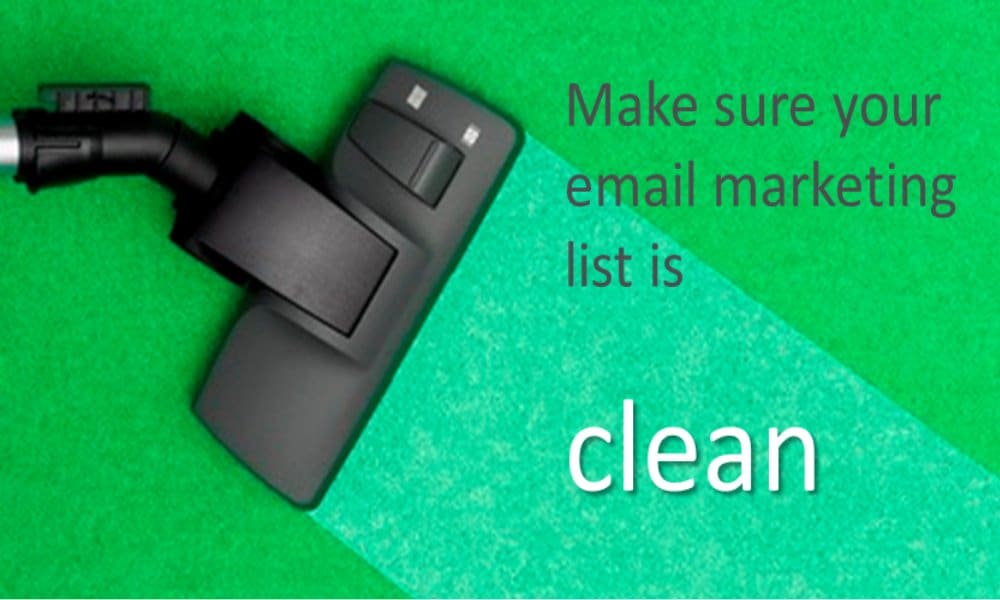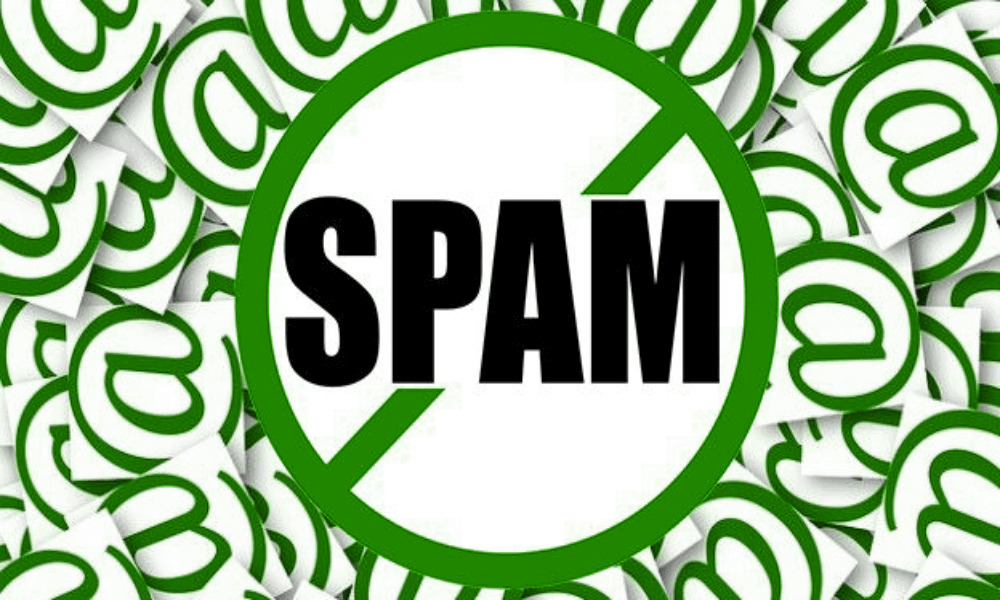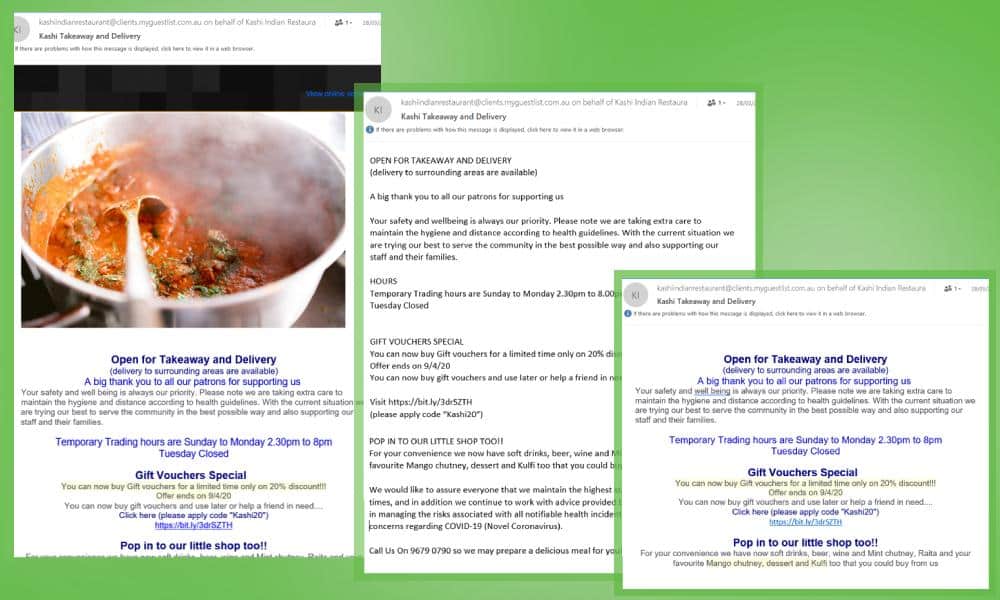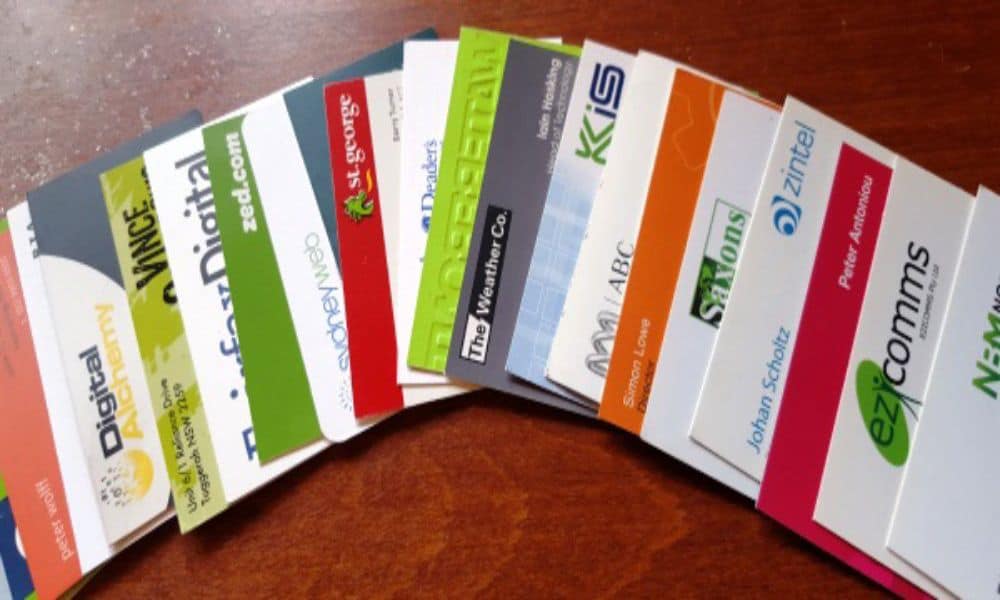As you probably know, I’m a passionate believer in email marketing. Having your own email list and communicating regularly is a simple, low-cost way to build reputation and trust – so people approach you when they’re ready to buy. I’ve written before about setting up a contact database, fields to include and segmentation ideas. Today, let’s focus on ensuring a high quality, clean mailing list.
Remember, a targeted, clean mailing list is more effective than a big, spammy mailing list.
Existing email addresses you haven’t been using
Email addresses go out of date really quickly.
- People are always changing jobs, so business email addresses change.
- If you’re selling to consumers, you’ll find personal email addresses change too. This can be a change of provider, or more likely an overload of spam in the inbox.
For whatever reason, if you haven’t used your email contact list in the last two to three years, many of the addresses are going to bounce. The email address simply doesn’t exist any more.
Even if your message does get to the inbox, you face challenges.
Some people may not even remember you or your business. Others may remember, but they haven’t heard from you for ages and they’re not expecting to. So they’re annoyed. In either case, they’re likely to think of your email as spam. And they may complain.
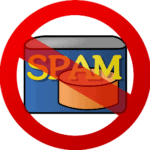 That’s a problem for several reasons:
That’s a problem for several reasons:
- If you’re paying to send your emails, it’s a waste of money to send to non-existent addresses.
- It can upset your email provider. Rightly so. If they let clients send spam, it affects their reputation and their business, so they need to manage you. Here’s what MailChimp have to say about it. ‘Internet Service Providers (ISPs), anti-spam groups, and corporate email protection services set thresholds for spam complaints, bounced emails, and unsubscribe requests. High rates of these metrics can lead to account suspension, and typically are caused by old or stale email addresses.‘
- In extreme cases, you may even find someone reports you to ACMA for sending spam.
Penalties for sending spamare up to $1.8 million. You’re unlikely to get a fine like that on your first offence, but is it worth the risk? And do you want the attention of the authorities before you even get started?
It makes sense to do some cleaning of your list before you start marketing to it. Let’s look at practical tips to help you clean your list.
How to review your list using Excel features
If you only have a couple of hundred emails, your best option may simply be to put them in Excel and review manually.
If you have a few thousand emails on your list, try using Excel data management features such as sorting and filtering.
Here are some simple options to consider.
Sorting options
- Sort your list by email address. Look for duplicates (Conditional Formatting > Highlight Cells Rules > Duplicate Values can help) and take out duplicates. Since rows with the same email address are next to each other, it’s easy to review other data fields and decide which record is more accurate. So you know which to keep.
- Sorting by surname and looking for duplicates may also help in some cases.
- If your market is Australia only, why not remove email addresses which have an overseas format? Keep the simple .com addresses, since these are used worldwide, but what about .co.uk, or .co.hk, or .cn or any of those country-specific domain name endings? People using those addresses are very unlikely to buy from you in Australia. If you need to reduce risk and build a clean mailing list, they’re good ones to eliminate.
Filtering options
- If you’re working business to business, it’s worth taking out personal email addresses. Gmail, Hotmail, Yahoo, Bigpond and so on – take them all out.
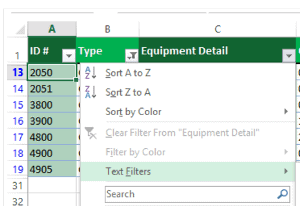 Delete ‘position-based’ email addresses. Sales@, info@, support@, admin@. Chances are the person who’s behind that email is not the same one who signed up ages ago, so they’ll think your email is spam.
Delete ‘position-based’ email addresses. Sales@, info@, support@, admin@. Chances are the person who’s behind that email is not the same one who signed up ages ago, so they’ll think your email is spam.- Search for competitor email addresses. If a competitor really wants to get your marketing, they’ll sign up under an address you can’t track back to them, but there’s no reason to make it easy!
Finally, a quick manual scan can sometimes help. No one knows your old contacts like you, so just take a look and see if anything looks dodgy.
Even after all this work, your list is still not completely clean. But don’t worry – it should be clean enough. Remember, your aim is to reduce the number of bounces and avoid spam / abuse complaints, so you don’t trigger alarms with your email provider.
Sending your first email to your cleaned list
Even though you’ve cleaned your list, you haven’t communicated with most of the people on it for quite some time. It’s possible you didn’t have a close relationship with them in the first place. So starting off by trying to sell them something probably won’t work very well.
Think about meeting somebody at a function and the first thing they do is try to sell you something. Or they invite you for coffee and ask you to join their Amway network. It’s too quick, too sudden. You get a better result by building a relationship first.
Start off by reaching out and reminding people that you exist. Tell them you’d like to email them. Tell them how often. And most importantly, tell them what’s in it for them. This gives them an incentive to stay subscribed.
So what is the value your emails will provide to subscribers? Common examples are:
 offers or promotions – appeals to those wanting to save
offers or promotions – appeals to those wanting to save- advance information, such as a sneak preview of houses to be listed for sale, or an early booking period for tickets to events. This appeals to those who want to be in the know.
- chances to win. This works well with personal services like massage, hairdressing or car-cleaning. Just pick one subscriber each month who gets a freebie. It’s an incentive for everyone to sign up, with marginal cost.
A sample email to help reconnect
With all that in mind, here’s a sample script for a first email which you can change to suit your business.
Your email address is on the database of <company name>. As you probably know, we <describe what your business does>. As part of our ongoing operational improvement, we are reviewing and updating our mailing list.
We plan to send occasional emails (one a month or less), with special offers, industry news, research reports, tips, client success stories and other relevant news and information. We would like to include your email address on our list. Please help us tailor information to you by updating your details.
If you don’t want to receive any offers or news from <company name>, please unsubscribe from this list.
Opt-in vs Opt-out
The process I’ve described here is an ‘opt-out’ process. Basically, you’re telling people that they’re on your list and giving them the option to opt-out.
Email providers usually recommend you be much more proactive and ask people to opt-in. This means you send something like the email below.
Your email address is on the database of <company name>. As you probably know, we <describe what your business does>. As part of our ongoing operational improvement, we are reviewing and updating our mailing list.
We plan to send occasional emails (one a month or less), with special offers, industry news, research reports, tips, client success stories and other relevant news and information.
We would like to include you on our mailing list. Please subscribe here to confirm you are happy to get these emails.
If you don’t want to hear from us, simply do nothing and we will remove you from our mailing list.
You can do that. Obviously you will get a much smaller list at the end of this process. So which one should you choose?
It depends.
- What was the source of your list?
- How much did you manage to clean it?
- How old is it?
- What does the law say in your country?
- How comfortable are you with risk?
Considering the Spam Act
I work primarily with Australian companies. In Australia, the Spam Act requires you to have either express or inferred consent before you send promotional emails. Read this post for the latest on Spam Act compliance.
- Making people resubscribe means you have express consent.
- But how do you know if you have inferred consent?
If someone is a client or has enquired about your services, you have inferred consent – unless and until they unsubscribe – as long as you use it. But if you don’t email for ages, that consent fades away and dies. As a rough guideline, email addresses collected and unused for 2 years or more have lost all inferred consent.
The ‘opt-out’ formula above is an attempt to revive inferred consent. You’re advising people in advance before you promote to them. It’s a good way to work with an aged business list.
What about lists built from your personal and business networks?
It might not work so well if your list is compiled from your personal networks and contacts. Many of these people have never expressed any interest in your business offer. (Quite apart from that, you may have reservations about offending your personal contacts.) If your list is mostly network contacts, you might prefer an ‘opt-in’ approach. Something like:
‘Hello, we know each other a bit. I’m building a mailing list, and I think some of my newsletter might be interesting to you. There’s going to be some special offers and industry insights. If you’d like to try it, just sign up here. If you don’t like the emails, you can unsubscribe at any time and I won’t be offended.’
It’s really your call as to which you think is right for you and your mailing list.
Summing Up
When it comes to mailing lists, size really isn’t the most important thing.
Bigger is normally better, but not if it means a drop in quality. And that’s especially true when you start out. I’ve seen results from email campaigns to less than 50 people.
If you’re starting out with email marketing, follow the basic rules:
- clean your list
- reconnect with people before you start selling to them
- always comply with the Spam Act. That means
- make it clear who your emails are from
- have an easy unsubscribe link
- don’t sign up email addresses without some sort of consent
Good luck!
PS. If you need help with cleaning your list or writing and sending your emails, let’s talk!

